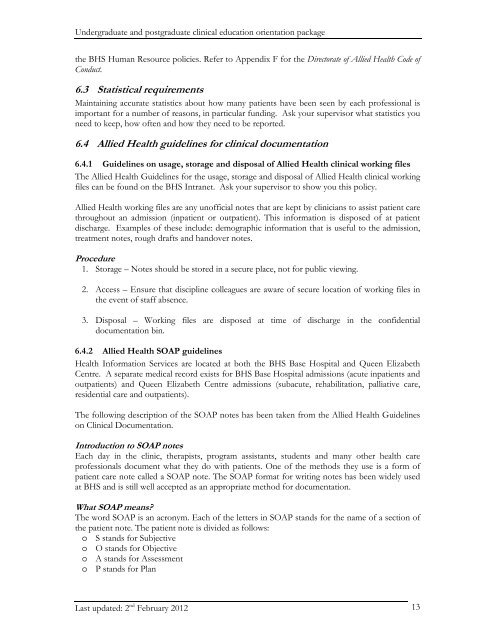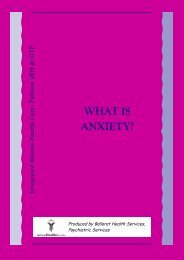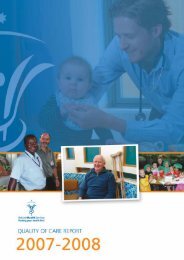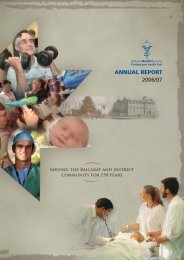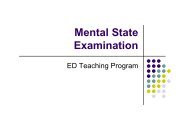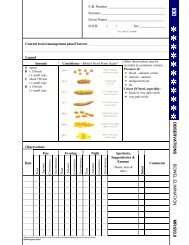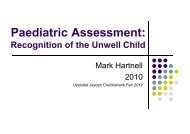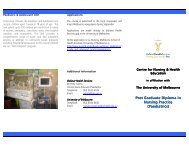Student Orientation Manual - Ballarat Health Services
Student Orientation Manual - Ballarat Health Services
Student Orientation Manual - Ballarat Health Services
You also want an ePaper? Increase the reach of your titles
YUMPU automatically turns print PDFs into web optimized ePapers that Google loves.
Undergraduate and postgraduate clinical education orientation package<br />
the BHS Human Resource policies. Refer to Appendix F for the Directorate of Allied <strong>Health</strong> Code of<br />
Conduct.<br />
6.3 Statistical requirements<br />
Maintaining accurate statistics about how many patients have been seen by each professional is<br />
important for a number of reasons, in particular funding. Ask your supervisor what statistics you<br />
need to keep, how often and how they need to be reported.<br />
6.4 Allied <strong>Health</strong> guidelines for clinical documentation<br />
6.4.1 Guidelines on usage, storage and disposal of Allied <strong>Health</strong> clinical working files<br />
The Allied <strong>Health</strong> Guidelines for the usage, storage and disposal of Allied <strong>Health</strong> clinical working<br />
files can be found on the BHS Intranet. Ask your supervisor to show you this policy.<br />
Allied <strong>Health</strong> working files are any unofficial notes that are kept by clinicians to assist patient care<br />
throughout an admission (inpatient or outpatient). This information is disposed of at patient<br />
discharge. Examples of these include: demographic information that is useful to the admission,<br />
treatment notes, rough drafts and handover notes.<br />
Procedure<br />
1. Storage – Notes should be stored in a secure place, not for public viewing.<br />
2. Access – Ensure that discipline colleagues are aware of secure location of working files in<br />
the event of staff absence.<br />
3. Disposal – Working files are disposed at time of discharge in the confidential<br />
documentation bin.<br />
6.4.2 Allied <strong>Health</strong> SOAP guidelines<br />
<strong>Health</strong> Information <strong>Services</strong> are located at both the BHS Base Hospital and Queen Elizabeth<br />
Centre. A separate medical record exists for BHS Base Hospital admissions (acute inpatients and<br />
outpatients) and Queen Elizabeth Centre admissions (subacute, rehabilitation, palliative care,<br />
residential care and outpatients).<br />
The following description of the SOAP notes has been taken from the Allied <strong>Health</strong> Guidelines<br />
on Clinical Documentation.<br />
Introduction to SOAP notes<br />
Each day in the clinic, therapists, program assistants, students and many other health care<br />
professionals document what they do with patients. One of the methods they use is a form of<br />
patient care note called a SOAP note. The SOAP format for writing notes has been widely used<br />
at BHS and is still well accepted as an appropriate method for documentation.<br />
What SOAP means<br />
The word SOAP is an acronym. Each of the letters in SOAP stands for the name of a section of<br />
the patient note. The patient note is divided as follows:<br />
o S stands for Subjective<br />
o O stands for Objective<br />
o A stands for Assessment<br />
o P stands for Plan<br />
Last updated: 2 nd February 2012 13


